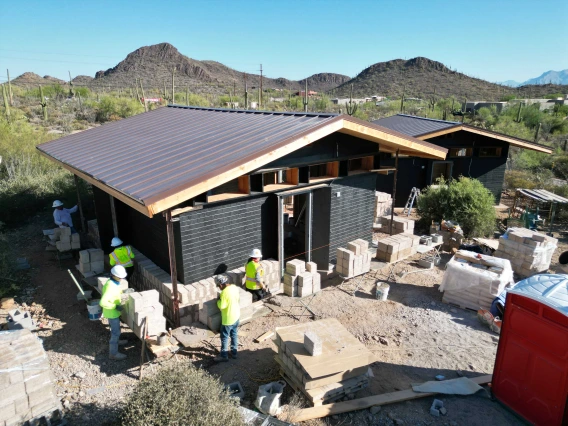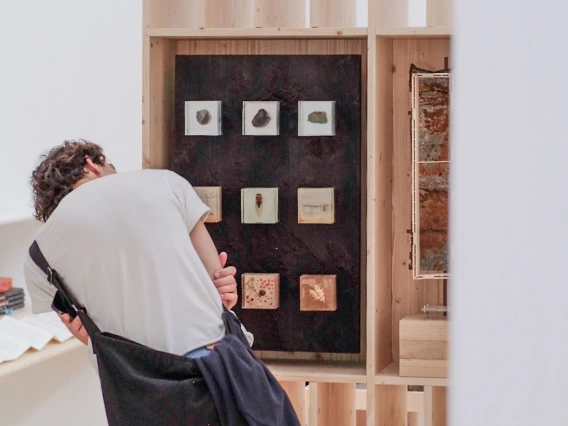Architectural History Professor Lisa D. Schrenk Publishes Critically Acclaimed Book on the Oak Park Studio of Frank Lloyd Wright
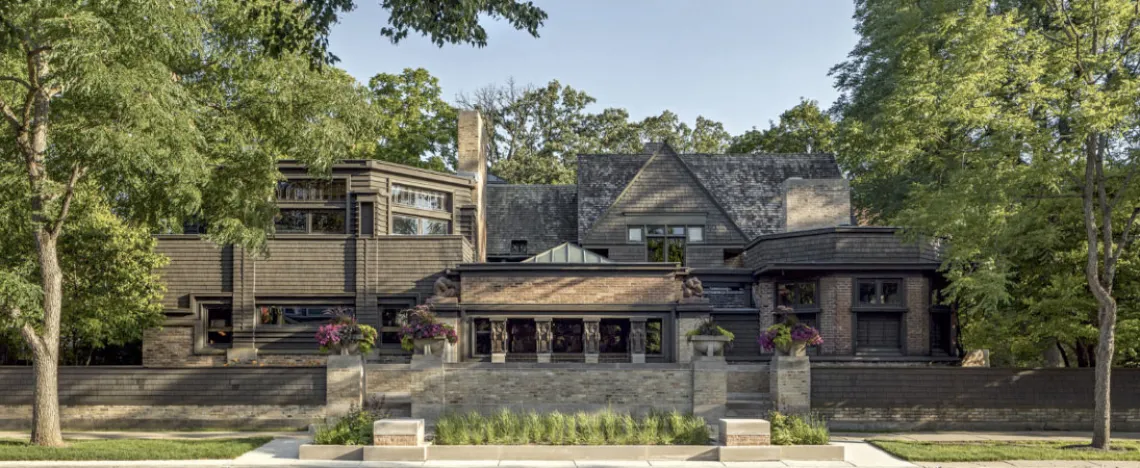
Frank Lloyd Wright's Oak Park studio. Photo by James Caulfield.
“Frank Lloyd Wright’s early residential studio in suburban Oak Park served as the nontraditional setting for the maturing of his architectural ideology, including the development of the prairie house,” writes Lisa D. Schrenk in the introduction to her new book, The Oak Park Studio of Frank Lloyd Wright (The University of Chicago Press). “Unlike the more traditional, businesslike downtown offices of colleagues, the studio, located in a peaceful, bucolic community, had an informal homelike quality.”
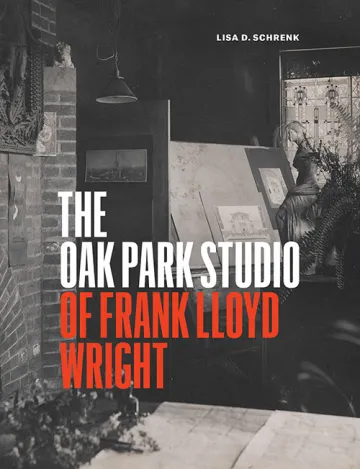
Perhaps that’s not surprising, considering in 1898 Wright wrote that “the architect should place himself in an environment that conspires to develop the best there is in him. The first requisite is a place fitted and adapted to be protected and set aside from the distractions of the busy city.”
Between 1898 and 1909, Wright’s Oak Park Studio was just that—a nontraditional work setting adjacent to his home, the “unusual design of the studio reflect[ing] Wright’s desire to make a clear stylistic break from the past,” writes Schrenk.
Schrenk, an associate professor of architectural history in the College of Architecture, Planning and Landscape Architecture at the University of Arizona, is a leading authority on the early work of Wright. In addition to teaching at UArizona and other universities, she spent four years as director of education for the Frank Lloyd Wright Home and Studio.
The richly narrative and informative book containing 180 images provides the first comprehensive look at the early independent office of one of the world’s most influential architects. But The Oak Park Studio of Frank Lloyd Wright is not just an examination of the building itself. One of the book’s “greatest achievements,” notes Richard Cleary of the University of Texas at Austin, “is the vivid evocation of life within the studio by populating it with Wright and his family members, employees, consultants and clients.”
Published in April 2021, the book has already received critical acclaim: “In this magnificent offering, Schrenk takes a remarkably detailed look at Frank Lloyd Wright’s Oak Park Studio in Chicago…. Architecture buffs won’t want to miss this extraordinary monograph,” writes Publishers Weekly.
Schrenk, who joined CAPLA in 2012 and holds a master’s degree in architectural history from the University of Virginia and a PhD in Art History from the University of Texas at Austin, weaves her knowledge of Wright not only into her research and scholarship but also into her teaching.
“During most of my time at the Frank Lloyd Wright Home and Studio, my office was located on the balcony of the Oak Park drafting room where I was able to experience his architecture on a daily basis in various lighting conditions at different times of day and different seasons,” she says. “It became clear that his is an architecture that can only really be understood through firsthand exploration.” So her courses on Wright include field trips to his works in the Phoenix area and Chicago.
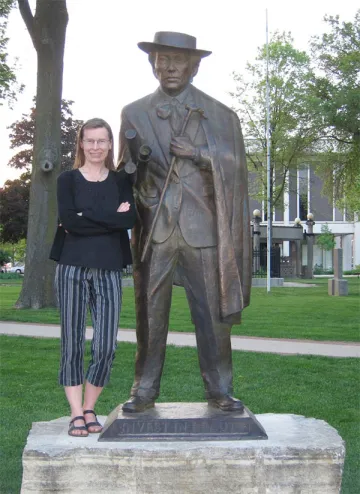
Lisa D. Schrenk with statue of Frank Lloyd Wright in Mason City, Iowa. Photo by Steven Weis.
“I typically schedule our visits to Chicago to coincide with Oak Park’s annual Wright Plus Housewalk so we can serve as volunteers for the event. In addition to giving back to the architectural community, this allows students to spend significant time in Wright buildings, soaking up the lessons of his architecture.”
Schrenk’s work on Wright’s Oak Park studio has also impacted her teaching by helping her to understand how buildings are not static entities. “Wright used his home studios as architectural laboratories, continually making modifications as he met changing functional needs and explored new design ideas,” she explains. “This type of practice adds a significant level of complexity when attempting to understand a building’s past history.”
Schrenk spent years studying the physical building of the Oak Park studio, as well as architectural drawings, photographs and other historic records in order to develop a clear understanding of the evolution of the building and how it related to Wright’s developing design ideology.
“To gain an appreciation of the fact that all buildings change over time, sometimes significantly, I ask students in my survey courses to consider the historical context of buildings,” she notes. “This includes exploring what happened at the site prior to the building’s construction and what has happened to the building and its site over time”—including addressing how these changes relate to relevant cultural, political and environmental conditions. “This type of exercise provides good illustrations of the fact that buildings have a life (hopefully a long one) that continues after the designer’s work is done.”
For those of us who are not fortunate enough to take one of Schrenk’s courses or field trips, we now have the quintessential book on Wright’s Oak Park studio and his design thinking and development. “Schrenk’s encyclopedic volume is nothing short of an indispensable reference on Write’s celebrated laboratory, as both an architectural artifact and incubator of modern American architecture,” concludes Christopher Vernon, design researcher and professor of landscape architectural history.
Learn more about The Oak Park Studio of Frank Lloyd Wright and read “Understanding the Past to Design a Better Future,” CAPLA’s profile of Schrenk.

